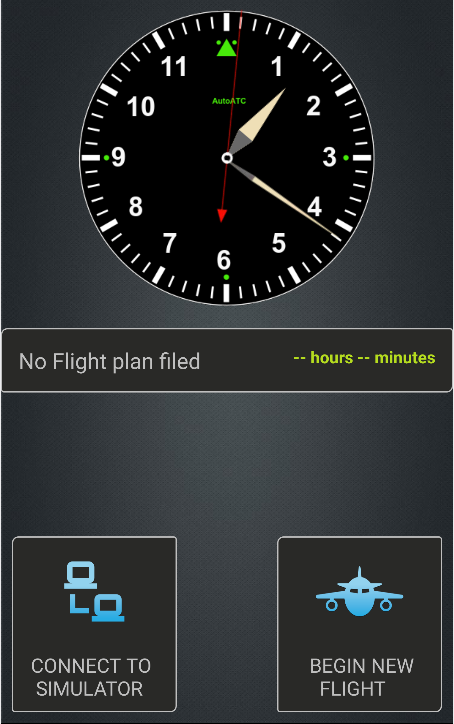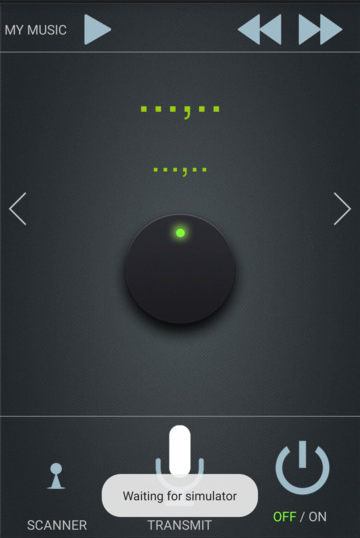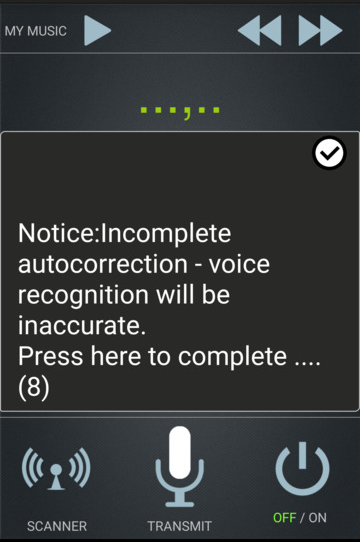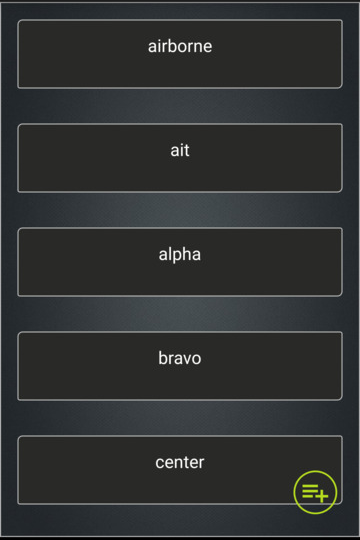
Interactive Flight
Select Fly from the home page of the application to begin communication with AutoATC
Pressing/gesturing back, or pressing on the bar at the top of the page will bring you back to this page.
From this page you can also configure your current location and other options by selecting settings from the menu in the top right of the page.

The Application supports both simulator connection and self contained operation simulating the use of a VHF radio on the ground and in the air.
Selecting Fly from the landing page will open the begin flight page, from here you can select whether to connect to a flight simulator, or begin a new flight using the map to set the aircraft location.
If you have filed a flight plan the remaining time before you are due to depart will be shown in the center of the page.
All times in AutoATC are in UTC (Universal Coordinated Time – all aviation times are UTC; time communication is explained in more detail in the Ground School).

Simulator Connection
Selecting “Connect to Simulator” begins the application listening for the flight simulator to become active.
Connecting to a flight simulator allows both the simulator and the application to control Com 1, to activate the voice transmission, what frequency is active and in standby.
The application takes its location information (used to determine what frequencies are in range) from the simulator.
This page will initially show “waiting for simulator” and will be otherwise inactive until a connection is established.
Connection is automatic, simply start a simulator with the AutoATC plugin installed and the application on the same network, and the application will connect to it.

Beginning a new flight
Once the application is active (either by beginning a new flight or successfully connecting to a flight simulator), it will perform a quick check that all auto correct items are complete. If not, a notice will pop up for a short period suggesting they be completed.

Vocabulary Training and Voice Commands
Some simulator aircraft may also include voice commands which will add to the vocabulary training list when they are first used (such as “gear up”)
The application should be trained what any empty auto correct options sound like for optimum performance.
The green plus in the bottom right can be used to add new auto corrections.